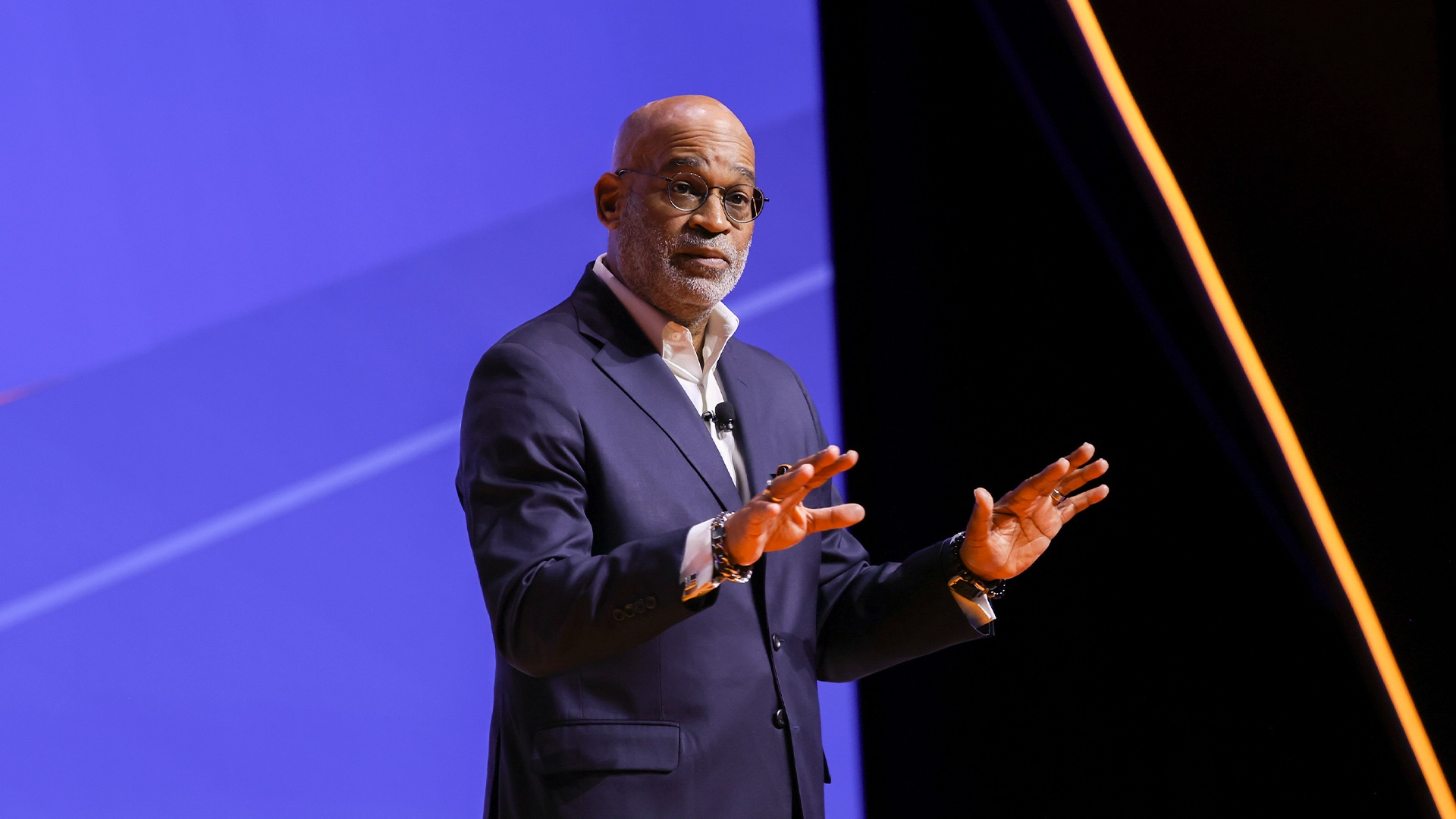Future-proofing infrastructure: What higher education needs to know now
The reality of colleges and universities today? Aging infrastructure is in urgent need of attention. Enrollment is declining and squeezing budgets. And student expectations for modern, tech-enabled campus experiences are rising. The pressure is real and growing.
Despite recent gains, the facilities funding gap still leaves one in every three dollars of need unmet, a shortfall nearly twice as large as it was five years ago.1 This chronic underinvestment continues to widen the backlog of maintenance and capital renewal, forcing campus leaders to weigh hard choices, from reducing services to decommissioning buildings.
But some institutions are finding a path forward by aligning infrastructure investment with strategic goals for academic excellence, student success, and long-term financial resilience. The question isn’t if upgrades are necessary. It’s how to fund them in ways that future-proof both the campus and the institution.
Why facilities may be higher ed’s greatest risk and opportunity
Campus infrastructure is under growing strain. Years of deferred maintenance are compounding into cascading operational risks, from HVAC failures in residence halls to outdated electrical systems in research facilities. At the same time, enrollment volatility and reductions in state funding are limiting access to traditional capital, leaving many institutions without the resources to address these critical needs.
According to a recent Inside Higher Ed survey, one in three chief business officers now identify deferred maintenance and infrastructure costs as a top financial risk. Yet 63% of institutions can fund only a fraction of their identified needs. Moody’s has cautioned that this mounting backlog poses a significant credit risk to the entire higher education sector, underscoring the urgency for proactive solutions.2
Meanwhile, students are arriving with high expectations for technology-enabled, sustainable, and comfortable learning environments. And they’re paying attention: 90.4% of students say the quality and condition of campus facilities impact their decision to stay enrolled.3
Sustainability mandates add another layer of complexity, requiring upgrades that boost building performance, reduce emissions, and meet institutional climate goals.
Traditional funding models can’t keep pace with these competing demands. That’s why forward-looking universities are turning to alternative financing strategies that connect infrastructure improvements with measurable outcomes, like operational savings, improved retention, and long-term cost avoidance.
Waiting isn’t an option. The institutions leading today are leveraging smart investments to future-proof their campuses and strengthen their academic mission.
Exploring strategic infrastructure investment models
Instead of viewing facilities as a cost center, successful institutions are embracing strategic investment models that unlock value through operational savings, enhanced performance, and long-term planning.
Proactive maintenance and infrastructure strategies are at the heart of this shift. These include building automation systems that reduce energy consumption and extend equipment life as well as preventive maintenance protocols that minimize emergency repairs and unexpected downtime.
By transitioning from reactive to proactive facility management, institutions can reduce backlogs, avoid costly delays, and create a better campus experience.
Capital improvement programs are another critical tool. With an expert team helping guide capital improvement programs, institutions can address urgent facility needs without an upfront investment. These financial solutions generate funding from existing operating budgets, enabling long-term upgrades without compromising fiscal health.
Energy performance contracting further supports sustainable improvements. The right education specialist can assess your campus infrastructure, utility usage, and operating costs to identify and implement upgrades that pay for themselves through guaranteed energy savings.
Strategic benefits include:
- Immediate improvements without major capital outlays
- Predictable, stabilized operational costs
- Performance guarantees that protect your investment
- Enhanced student experience that supports enrollment and retention goals
Why strategic infrastructure investment pays off
When universities approach infrastructure as a strategic asset—not just a maintenance issue—they unlock measurable returns that support institutional success across academic, operational, and financial dimensions.
Student Experience and Retention
Strategic facility upgrades directly enhance the student experience, supporting:
- Increased satisfaction and retention through modernized learning environments
- Flexible, technology-enabled spaces that foster innovative pedagogy
- Enhanced campus amenities that improve recruitment outcomes
- Energy-efficient buildings that align with student values around sustainability
Operational Excellence
Infrastructure investments streamline operations and reduce costly disruptions:
- Predictive maintenance programs lower emergency repair costs
- Building automation systems optimize energy use and system performance
- Integrated facility management reduces administrative burden and improves responsiveness
Financial Performance
Smart investments deliver clear bottom-line benefits:
- Guaranteed energy savings that create predictable budget relief
- Extended building lifecycles that reduce capital replacement needs
- More attractive campus environments that stabilize enrollment and support tuition revenue
Long-Term Strategic Value
Infrastructure planning also positions institutions for future growth:
- Facilities that support program innovation and academic expansion
- Sustainability gains that boost reputation and access to funding
- Operational efficiencies that free up resources for the academic mission
Strategic infrastructure investment isn’t just a facilities decision—it’s a foundation for long-term competitiveness.
Delivering real-world impact for Georgia Tech
Strategic infrastructure investments are already producing measurable outcomes for colleges and universities across the country. From energy savings and operational efficiency to enhanced learning environments and long-term financial gains, institutions are proving that a smart, proactive approach to facility upgrades can deliver real value. Here’s how one leading university turned infrastructure challenges into lasting results.
Through an Energy Savings Performance Contract (ESPC) with ABM, Georgia Institute of Technology upgraded fume hood controls in over 140 lab spaces without upfront capital investment. The initiative delivered outstanding results: during fiscal year 2020, energy consumption dropped 73.7% in the ES&T building and 52.7% in a science hall, surpassing guaranteed savings by nearly $173,000 that year alone.
Over a 10-year period, the project is projected to save $11.7 million in utility costs while improving lab safety, reducing carbon footprint, and enabling preventive maintenance through real‑time monitoring. The work was completed ahead of schedule, with minimal disruption to research operations.
How strategic partnerships prepare you for the future
For today’s campus leaders, addressing infrastructure challenges requires creativity, strategy, and the right partners. Traditional funding alone won’t close the gap. Strategic partnerships unlock new ways to improve campus performance by aligning vendor incentives with institutional goals. Performance-based models ensure accountability, while expert partners bring the technical and financial innovation needed to move projects forward.
As the landscape of higher education grows more competitive and complex, infrastructure has become a strategic lever for mission success and long-term sustainability.
Learn more about how we deliver best practices that help you tackle funding challenges.
Ready to future-proof your campus?
The right infrastructure partner takes a step beyond delivering maintenance. They also help you build environments that attract students, support academic excellence, and drive long-term value. Ready to reimagine your campus infrastructure? ABM can help you build smarter, not just bigger.
1 2024 State of Facilities Report





